
Wateree River HP & WMA
South Carolina Department of Natural Resources

About the Property
- 3,674-acre tract of land
- Heritage Preserve and Wildlife Management Area with 4 official hiking trails
- Wateree River—The South Carolina Waterways—Not barriers or boundaries, but the highways, byways and super stores of ancient times.
History of the Property: Chain of Habitation
- The first Americans—Paleo Indians — 14,000-10,500 years ago—wandering bands of hunters?
- Archaic Indians — 10,500 to 4,000 years ago — the first signs of cultural complexity—people working together in big groups to build things. The first pottery.
- Woodland Indians — 4,000 to 1, 000 years ago—the first bows and arrows, new and better pottery, gardening/agriculture, fortified living places.
- Mississippian Indians — 1,000 to 500 years ago—cultural and political complexity, large scale agriculture and mound-building.
- Goodwill Plantation—1753-1869 - the time of a thousand slaves.
- Cook’s Mountain Plantation — 1770 — James Cook — Famous cartographer mapped South Carolina in 1773 for King George III.
- Garner’s Ferry 1756-1857 — A crossing over the Wateree River—First Simmon’s Ferry, then Brisbane’s Ferry, then Garner’s Ferry, then Huger’s Ferry. But the road to it is still called Garner’s Ferry Road, after Pressley Garner (1784).
At the Wateree River WMA & Heritage Preserve history and nature come together. This property has many differet animal (fauna) and plant (flora) species. Here we have just a few:
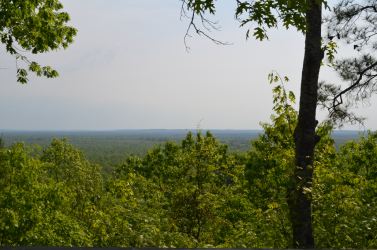
Fauna
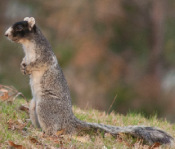
Fox Squirrel
- Color: gray, black or brown; black facial “mask” and white patches
- Diet: seeds, nuts, fruits, fun
- Lifespan: 7 years
- Habitat: longleaf pine fores
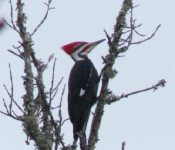
Pileated Woodpecker
- Color: black bodies with white neck stripes and a red crest
- Diet: insects, fruits, nuts
- Lifespan: 12 years
- Habitat: mixed deciduous-coniferous forests

Indigo Bunting
- Color: Males: bright blue with black tipped wings; Females: dull brown and light white streaking on chest
- Diet: seeds, berries, buds, spiders and insects, twigs
- Lifespan: 9 years.
- Habitat: forests with field
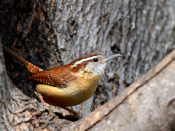
Carolina Wren
- Color: bright, unpatterned reddish-brown, buffy orange chest and white throat
- Diet: insects, spiders, fru
- Lifespan: 6 years.
- Habitat: wooded area

Wild Turkey
- Color: Males: bronze-green with fan-like tail, Females: tan-brown
- Diet: nuts, seeds, fruits, insect
- Lifespan: 3-4 years
- Habitat: mature forest with oak, hickory and beech trees.

Whitetail Deer
- Color: grey-brown
- Diet: leaves, grass, fruits, corn, alfalfa, fungi
- Lifespan: 5 years.
- Habitat: wooded are
Flora
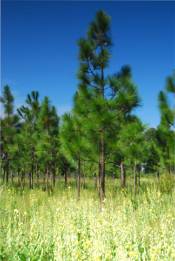
Longleaf Pine
- Largest cones of any pine in the Carolinas
- Thrives with the use of conducted prescribed burns
- Grows in the most biologically disverse ecosystem in the Carolinas
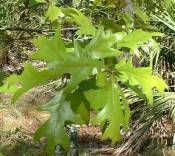
Turkey Oak
- Widely used as firewood
- Bark and twigs used to tan leather
- Acorns are a major food source for animals
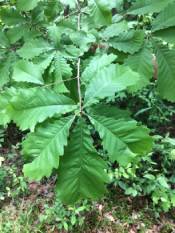
Chestnut Oak
- Shade Tree
- Acorns are a major food source for animals
- Prefereed wood for wooden barrels to house food
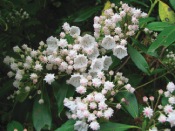
Moutain Laurel
- All parts are toxic if ingested
- Flowers turn into brown fruits
- Commonly grows as a Evegreen shrub or small tree
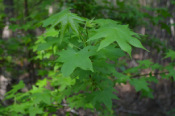
Sweet Gum
- Long-stemmed, woody, burr-like fruit
- Seeds are eaten by animals
- Wood is used for fine furniture
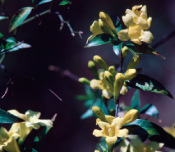
Yellow Jessamine
- State flower
- Vines with trumpet-shaped flowers and glossy evergreen leaves
- Flowering months are February to early May
Contact SCDNR Community Engagement
Contact SCDNR Community Engagement at 803-734-3729, en Español al 803-734-9885. For email inquiries or to sign up for our newsletter, contact us at: informacion@dnr.sc.gov.
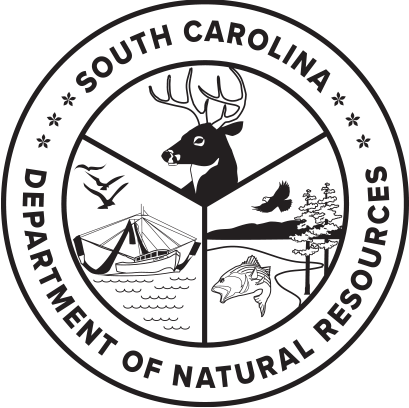

The South Carolina Department of Natural Resources prohibits discrimination on the basis of race, gender, color, national origin, religion, disability or age. Direct inquiries to the Office of Human Resources, P.0. Box 167, Columbia, S.C. 29202.


